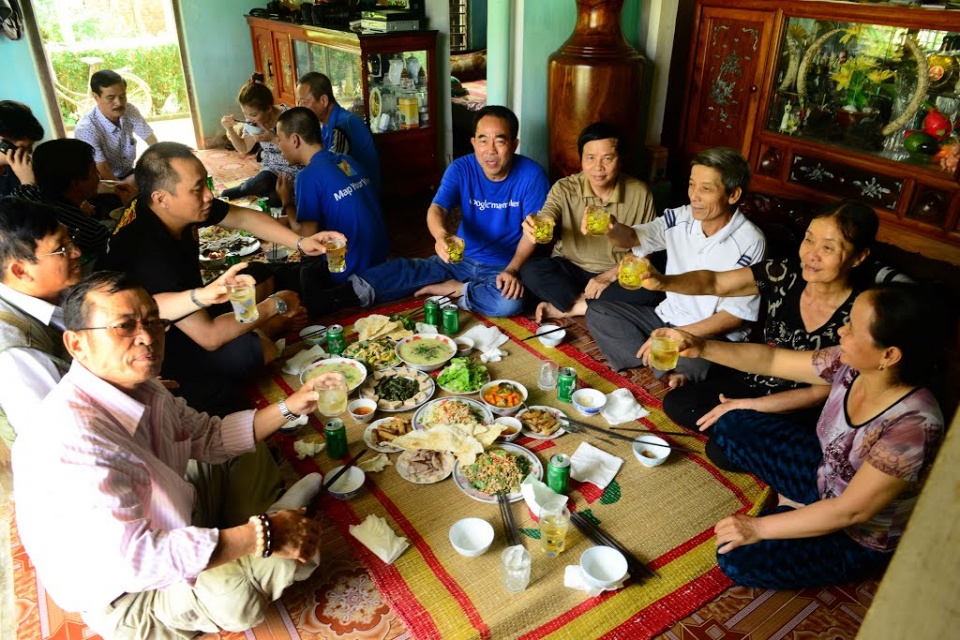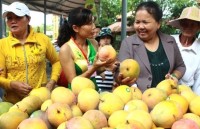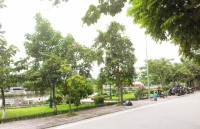
The traditional meals in Vietnam
Latest
| TIN LIÊN QUAN | |
| Food festival celebrates ASEAN Community | |
| Chef Ismail represents Malaysia at ‘Food Week Vietnam’ in Ha Noi | |
The French, reputed to be gourmets, turn a “real” meal into a five-act drama:
- Hors d’oeuvres
- Entrée
- Meat and vegetables
- Dessert
- Cheese
This, I believe, is the stereotyped model of the West.
The traditional Vietnamese meal follows other rites, dictated by a hot and humid climate and the civilization of rice marked by the vegetable.
First, the material organization. The Western meal is served on a table. The traditional Vietnamese one is served on a mat, which can be spread on a plank bed or on the floor itself [1]. The dishes are laid on a tray of wood or bronze. In the West, in France in particular, the invitation to eat is: “À table s’il vous plait” (Take your seat at the table, please). In Vietnam, one way to say this is: “Take your seat at the tray, please”. About the order of precedence, in the West, the place of the person presiding over the meal maybe at the center of the table (the French way) or at one end (the British way). In Vietnam, at formal meals eaten at the communal house, on " superior mats " (chiếu trên) the highest places are reserved for notables, persons with degrees, or elderly ones, while " inferior mats " (chiếu dưới) are for people of no peculiar distinction. Each tray is laid for four people (except in the case of family members), who sit at the four corners of the mat without any order of precedence. At a family meal, the rice pot is always put beside the mother (of the first daughter-in-law) whose role is to fill the bowls of the others when they are empty.
 |
| A traditional Vietnamese meal. (Source: Panoramio) |
Before the family meal is begun, an invitation must be extended by everyone, except the head of the family: “Mời ông, mời bà, mời bố, mời mẹ, mời anh, mời chị... xơi cơm” (I invite you, grandpa, grandma, father, mother, elder brothers, elder sisters... to eat the meal). " To say "eat ", the word “xơi”, more formal the word “ăn”, is used. Naturally, the youngest member of the family is the one who has to invite the most people. Since the 1945 revolution, and mostly following upheavals caused by thirty years of war, this ritual of invitation has unfortunately been lost in many families.
A proverb contains a piece of advice: “ăn trông nồi, ngồi trông hướng” (eating at a meal, one watches the pot; sitting down, one takes a careful look around). This means that before asking for more bowls of rice, one must make sure that enough rice remains in the pot; before taking one's seat, one must make sure one is causing no inconvenience to others.
It seems that the tradition of a Western meal, eaten with a fork and knife and served in courses, dates back only to the 16th century [2]. In a Vietnamese meal, all the dishes are laid out on the tray at the start of the meal. Except in the case of formal meals in which the dishes are eaten according to a conventional order, people sharing an ordinary meal can pick food with their chopsticks from any of these plates of bowls. Some reforms in the traditional use of chopsticks were thought necessarily as it was considered contrary to the rules of hygiene: each person is given a small individual dish or bowl to contain his share of brine or sauce; a pair of chopsticks is reserved for serving the food; each person will turn his chopsticks the other way round and use only the "clean " end to pick food from the plates (that was the method used by soldiers during the first war of resistance, 1945 - 1954). However, these reforms were generally not very popular.
In the course of a family meal, if a visitor turns up unexpectedly, he is invited to join in without any need for ceremony. A proverb says that in such a case, one simply brings an extra bowl and an extra pair of chopsticks (thêm bát thêm đũa). With friends, one shares whatever food one has.
In the old days [3], the same timetable was not applied by people of all walks of life for their meals. In the towns, traders took their lunch at about 9 a.m, and their dinner at about 5 p.m. Civil servants ate a full meal at around 6 in the morning, lunch at noon, and took practically nothing in the evening. In the countryside peddlers ate their meals very early in the morning and very late in the evening, by lamplight. Hence this folk song:
"Each day I eat my meals twice by lamplight
How can I manage the time to powder my cheeks and lacquer my teeth"
(Một ngày hai bữa cơm đèn,
Lấy gì má phấn răng đen hỡi chàng)
At the time of ploughing and harvesting, hired labourers took their meals before sunrise; lunch was brought to them in the fields; they had nothing in the evening, in most cases.
Meals were frugal. Meat was seldom eaten especially in the countryside. Rice growing claimed most land available and animal husbandry was little practiced. Proteins came from fish, shrimp, mussel, soya bean. Rice, often supplemented by sweet potato, maize, cassava, was the staple food. A man convalescing after a long illness was deemed to recover his health as soon as he started to “ăn giả bữa” (eat rice to make up for missed meals). A fold saying recommended that one should be content with “cơm ba bát, áo ba manh” (three bowlfuls of rice at mealtimes, a change of three shirts to cover one's back). The most common foods were: boiled convolvulus dipped in soya sauce (the water in which it was boiled, flavoured with lemon juice, was quite refreshing in the summer heat), sautéed convolvulus with garlic, salted aubergines, boiled vegetables such as “ngót, sắng, mồng tơi”, fried bean curd, sour fish soup (soups of kind or another were often present for people did not usually drink while eating), fried bean curd, fish cooked in brine, etc.
“Nước mắm” (fish brine) frequently accompanies the food served. The dishes are simple and wholesome, and suit the tropical climate. They vary with the seasons. In people's mind, the meal is a symbol of family union. One feels contentment at having just some well-cooked rice and soup (cơm nóng sốt, canh nóng). These things are not always available in an inn or a restaurant. Meals eaten in the company of one's family are treasured.
Huu Ngoc
[1] Meals served to farm workers are laid out on a “chõng” (small bamboo table with short legs which can also be used as a bed or a seat).
[2] In 1488, at the peace banquet in Bruges, King Maximilian was still using his fingers. In the days of Montaigne (16th century), people picked food of their choice from a big common plate with fingers.
[3] During the French colonization.
 | Global food safety forum opens in Ho Chi Minh City Health Minister Nguyen Thi Kim Tien told the global food safety forum in Ho Chi Minh City on August 28 that Vietnam attaches importance to ... |
 | Vietnam’s hosting of APEC Food Security Week hailed APEC officials have applauded Vietnam’s hosting of the Food Security Week, which took place in the Mekong Delta city of Can Tho from August 18-25, ... |
 | Ha Noi to launch art, food space in Tay Ho An art and street food space will be launched at Trinh Cong Son street and adjacent areas in Ha Noi’s Tay Ho district from August ... |

















